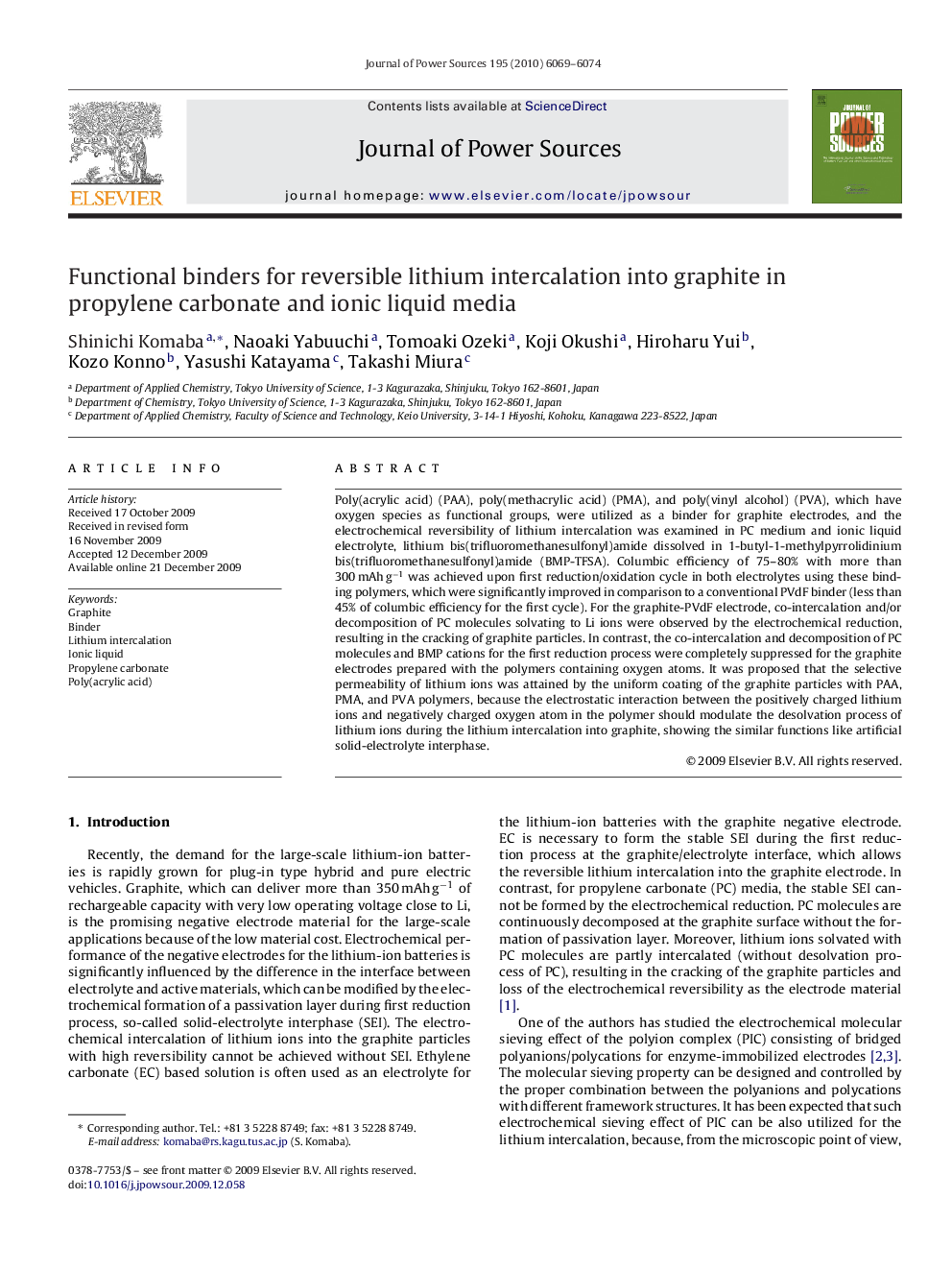| Article ID | Journal | Published Year | Pages | File Type |
|---|---|---|---|---|
| 1289006 | Journal of Power Sources | 2010 | 6 Pages |
Poly(acrylic acid) (PAA), poly(methacrylic acid) (PMA), and poly(vinyl alcohol) (PVA), which have oxygen species as functional groups, were utilized as a binder for graphite electrodes, and the electrochemical reversibility of lithium intercalation was examined in PC medium and ionic liquid electrolyte, lithium bis(trifluoromethanesulfonyl)amide dissolved in 1-butyl-1-methylpyrrolidinium bis(trifluoromethanesulfonyl)amide (BMP-TFSA). Columbic efficiency of 75–80% with more than 300 mAh g−1 was achieved upon first reduction/oxidation cycle in both electrolytes using these binding polymers, which were significantly improved in comparison to a conventional PVdF binder (less than 45% of columbic efficiency for the first cycle). For the graphite-PVdF electrode, co-intercalation and/or decomposition of PC molecules solvating to Li ions were observed by the electrochemical reduction, resulting in the cracking of graphite particles. In contrast, the co-intercalation and decomposition of PC molecules and BMP cations for the first reduction process were completely suppressed for the graphite electrodes prepared with the polymers containing oxygen atoms. It was proposed that the selective permeability of lithium ions was attained by the uniform coating of the graphite particles with PAA, PMA, and PVA polymers, because the electrostatic interaction between the positively charged lithium ions and negatively charged oxygen atom in the polymer should modulate the desolvation process of lithium ions during the lithium intercalation into graphite, showing the similar functions like artificial solid-electrolyte interphase.
